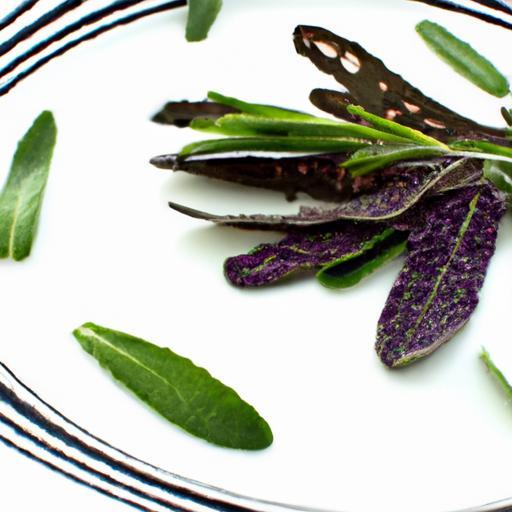In a world where ancient ingredients are weaving their way back into modern kitchens, acorn flour stands out as a hidden gem waiting to be discovered. Once a staple for indigenous communities and early settlers, this humble nut has now blossomed into a versatile and nutritious alternative to conventional flours. But crafting acorn flour isn’t simply about grinding nuts-it’s a delicate dance of patience, technique, and knowledge to transform bitter acorns into a smooth, rich flour perfect for baking, cooking, and nourishing your body. Welcome to your ultimate guide to perfection, where we unravel the secrets behind harvesting, leaching, and milling acorns, empowering you to bring this timeless ingredient to life with confidence and creativity.
Choosing the Right Acorns for Superior Flavor and Quality
Crafting acorn flour begins with selecting the perfect acorns that will deliver a rich, nutty flavor and high-quality flour. Not all acorns are created equal-look for those that are mature, free from cracks or holes, and heavy for their size, indicating freshness. White oak acorns tend to be sweeter and more palatable compared to the more bitter red oak varieties, which contain higher tannin levels.
Harvest acorns in the fall when they’ve naturally fallen to the ground but avoid those with mold, insect damage, or green coloration, which indicates immaturity.

Mastering the Leaching Process to Remove Bitter Tannins
The hallmark step in crafting acorn flour is the leaching process, designed to remove harsh tannins that give acorns their bitterness. Start by cracking open the shells using a nutcracker or rock, gently extracting the nutmeat. Then, chop or grind these pieces to increase surface area for effective tannin removal.
Two main methods exist: cold and hot water leaching. Cold leaching requires soaking the acorn pieces in cold water for several days, changing the water frequently until it runs clear, preserving more flavor and nutrients. Hot leaching shortens this to a few hours but requires careful monitoring to avoid cooking the acorns prematurely.
After leaching, dry the nutmeats thoroughly on a baking sheet in a low oven (200°F) or a dehydrator until crisp to prevent spoilage in storage.
Techniques for Grinding Acorns into Fine, Versatile Flour
Once completely dried, transform your acorns into flour using a high-quality grain mill or powerful blender. Grind in small batches to ensure consistency and avoid overheating, which can alter flavor and texture. Sift the flour through a fine mesh sieve to separate any larger particles, regrinding as needed until you achieve a soft, powdery texture perfect for baking and cooking.
This homemade acorn flour boasts a beautifully subtle earthiness, adding depth to breads, pancakes, and even thickening stews.
Storing and Using Acorn Flour for Delicious Recipes and Long Shelf Life
To preserve the delicate flavor and extend shelf life, store your crafted acorn flour in an airtight container in a cool, dark place. For longer storage, refrigeration or freezing is recommended, ensuring moisture is kept at bay.
Acorn flour complements gluten-free recipes, offering a nutritious alternative with a complex, nutty aroma. Use it in pancakes, muffins, breads, or mixed with other flours to enhance texture and flavor.
Prep and Cook Time
- Preparation: 2-3 hours (including leaching and drying time)
- Cooking/Baking with Flour: Varies by recipe, typically 20-40 minutes
Yield
Approximately 1 cup of acorn flour per 2 cups of shelled acorns
Difficulty Level
Medium – requires patience and attention during leaching but highly rewarding
Ingredients
- 4 cups mature white oak acorns, shelled and cracked
- Water for soaking and leaching
Instructions
- Shell the acorns: Use a nutcracker or rock to gently crack the shells, removing the nutmeats carefully without crushing.
- Chop the nutmeats: Roughly chop to increase surface area and ease tannin removal.
- Leach the tannins: Place the chopped acorns in a large bowl and cover with cold water. Change the water 3-4 times daily until it runs clear (usually 3-7 days). Alternatively, boil the nutmeats, changing the water every 20 minutes until bitterness subsides (usually 1-2 hours).
- Dry the acorns: Spread the leached acorns on a baking tray and dry in a 200°F oven or dehydrator for 4-6 hours until crisp.
- Grind into flour: Using a grain mill or strong blender, grind the dried acorns in small batches until fine and powdery.
- Sift the flour: Pass the flour through a fine mesh sieve, regrounding any coarse bits.
- Store properly: Place the flour in an airtight container; refrigerate or freeze if not using within 2 weeks.
Tips for Success
- Use white oak acorns for a sweeter, milder flavor and less intensive tannin leaching.
- If using the hot water method, be vigilant to avoid cooking the acorns, which can compromise flour texture.
- Keep drying temperature low and consistent to retain maximum flavor and prevent roasting.
- Combine acorn flour with wheat or gluten-free flours for improved baking performance.
- Label and date your containers to track freshness and avoid spoilage.
Serving Suggestions
Enjoy acorn flour pancakes drizzled with wild honey and fresh berries for a seasonal breakfast. It also makes delightful flatbreads garnished with rosemary and sea salt or adds richness to savory stews when used as a thickener. Pair with edible flowers or a sprinkle of toasted nuts for visual appeal and extra texture.
| Nutrient | Per 1/4 cup |
|---|---|
| Calories | 120 kcal |
| Protein | 2.5 g |
| Carbohydrates | 22 g |
| Fat | 3 g |
Discover more about nut flour baking techniques and visit National Park Service acorn guide for an educational dive into acorn harvesting traditions.
Q&A
Q&A: Crafting Acorn Flour – Your Ultimate Guide to Perfection
Q1: What makes acorn flour a unique ingredient in baking and cooking?
A1: Acorn flour is nature’s ancient superfood, rich in fiber, healthy fats, and subtle nutty sweetness. Unlike common grain flours, it brings a distinctly earthy depth to your recipes, connecting you to traditions that date back thousands of years. Its versatility lets you experiment from rustic breads to delicate pancakes with a hint of woodland charm.
Q2: How do you select the best acorns for flour-making?
A2: The key is to gather mature, brown acorns-free from cracks or mold-from oak trees, ideally during the fall harvest. Avoid green or overly dry acorns, as they can impart bitter flavors. Think of it as searching for hidden gems fallen from the trees, each one promising a touch of natural magic.
Q3: What’s the secret to removing the bitterness from acorns?
A3: That signature bitterness comes from tannins, which you can wash away through a patient leaching process. Soak shelled acorns in cold water, changing it frequently over several days, or speed things up with multiple boil-and-rinse cycles. This step transforms the rough acorn into a smooth, buttery flour ready to enchant your palate.
Q4: How do you grind acorns into flour without losing its subtle flavors?
A4: After thorough drying, use a quality grinder or food processor to grind the acorns into a fine powder. The trick is to avoid overheating during grinding, which can alter the flavor and nutritional qualities. A gentle, consistent grind yields a flour that’s both fragrant and full-bodied.
Q5: What are some creative uses for homemade acorn flour?
A5: The possibilities are as wild as the forests where acorns grow! Add it to pancake batter for a rich twist, mix it into bread dough for a hearty crumb, or even incorporate it into cookies and muffins for an unexpected depth. Acorn flour also shines as a thickener for soups and stews, infusing rustic warmth with every bite.
Q6: Are there any tips for storing acorn flour to keep it fresh?
A6: Keep your acorn flour in an airtight container, stored in a cool, dry place or even the freezer to extend its freshness. Because it contains natural oils, it’s best enjoyed within a few months to savor the full, nutty aroma and avoid any rancidity.
Q7: Can acorn flour be used as a gluten-free alternative?
A7: Absolutely! Acorn flour is naturally gluten-free, making it a great option for those with gluten sensitivities. However, it behaves differently from wheat flour, so it’s often best used in combination with other gluten-free flours or binding agents when baking.
Q8: What environmental benefits come with using acorn flour?
A8: Using acorns taps into a sustainable, wild-harvested resource that doesn’t require planting or intensive farming. It promotes biodiversity and encourages a deeper connection with native ecosystems. Plus, turning acorns into flour is a wonderful way to celebrate and honor the rhythms of nature.
With the right care and creativity, crafting acorn flour lets you bring the forest’s bounty right to your kitchen, making every dish a celebration of ancient flavors and natural goodness.
Concluding Remarks
As the last grains of acorn flour settle, you stand equipped with more than just a pantry staple-you hold a piece of nature’s timeless craft. From gathering to grinding, leaching to baking, each step transforms humble acorns into a versatile flour brimming with history and nourishment. Whether you’re a curious culinary adventurer or a seasoned homesteader, mastering acorn flour is a reward in patience and tradition. So go ahead: embrace the process, experiment boldly, and savor the unique flavors that only this ancient gift can bring to your table. Your journey to crafting acorn flour perfection has only just begun.


